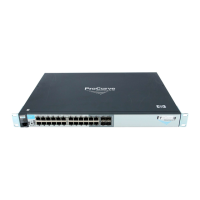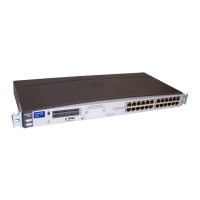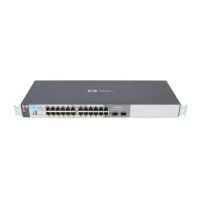Configuring for Network Management Applications
Using SNMP Tools To Manage the Switch
In the default configuration, there are no trap receivers configured, and the
authentication trap feature is disabled. From the CLI you can configure up to
ten SNMP trap receivers to receive SNMP traps from the switch. As an option,
you can also configure the switch to send Event Log messages as traps.
CLI: Configuring and Displaying Trap Receivers
Trap Receiver Commands Page
show snmp-server 14-20
snmp-server host
<ip-addr> <community-name> [none | all | non-
info| critical | debug]
14-21
snmp-server enable traps authentication 14-21
snmp-server enable traps link-change<port-list> 14-23
Using the CLI To List Current SNMP Trap Receivers.
This command lists the currently configured trap receivers and the setting for
authentication traps (along with the current SNMP community name data —
refer to “SNMPv3 Communities” on page 14-11).
Syntax: show snmp-server
Displays current community and trap receiver data.
In the next example, the show snmp-server command shows that the switch
has been previously configured to send SNMP traps to management stations
belonging to the “public”, “red-team”, and “blue-team” communities.
14-20

